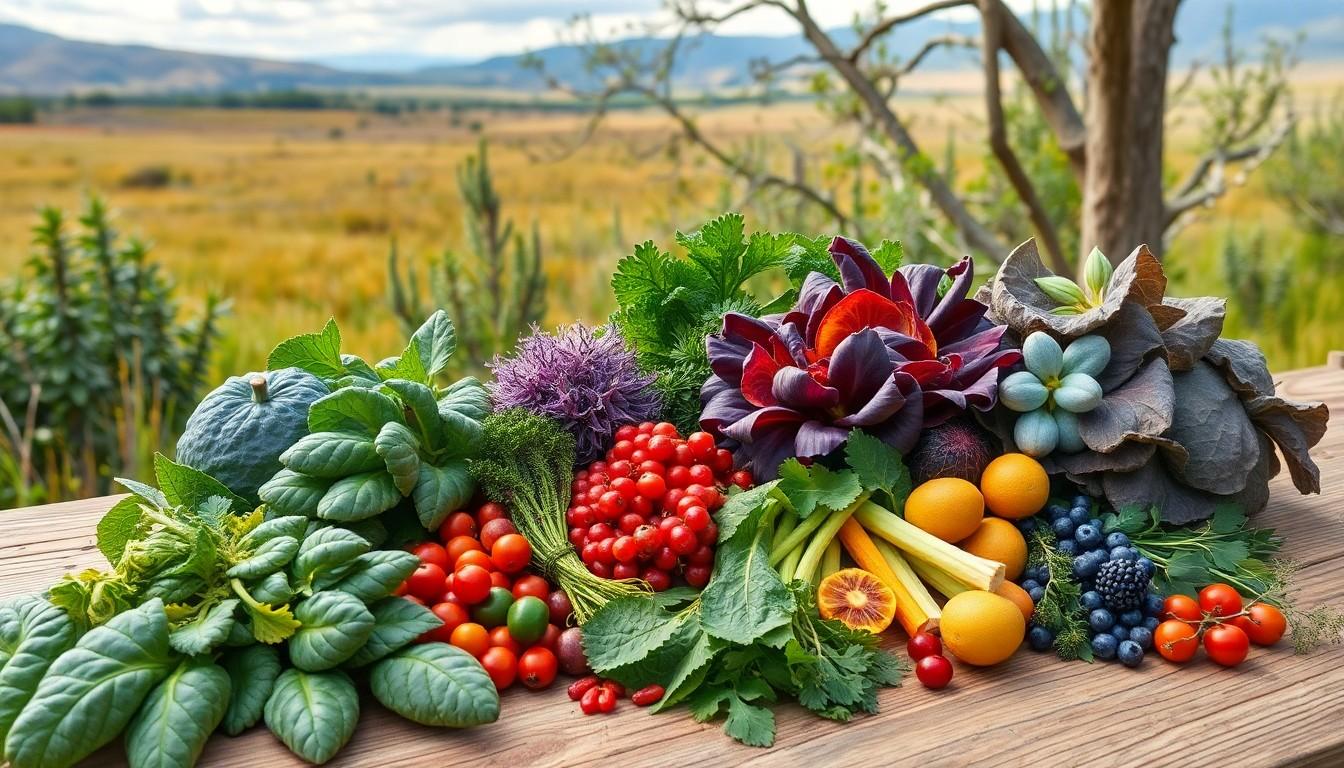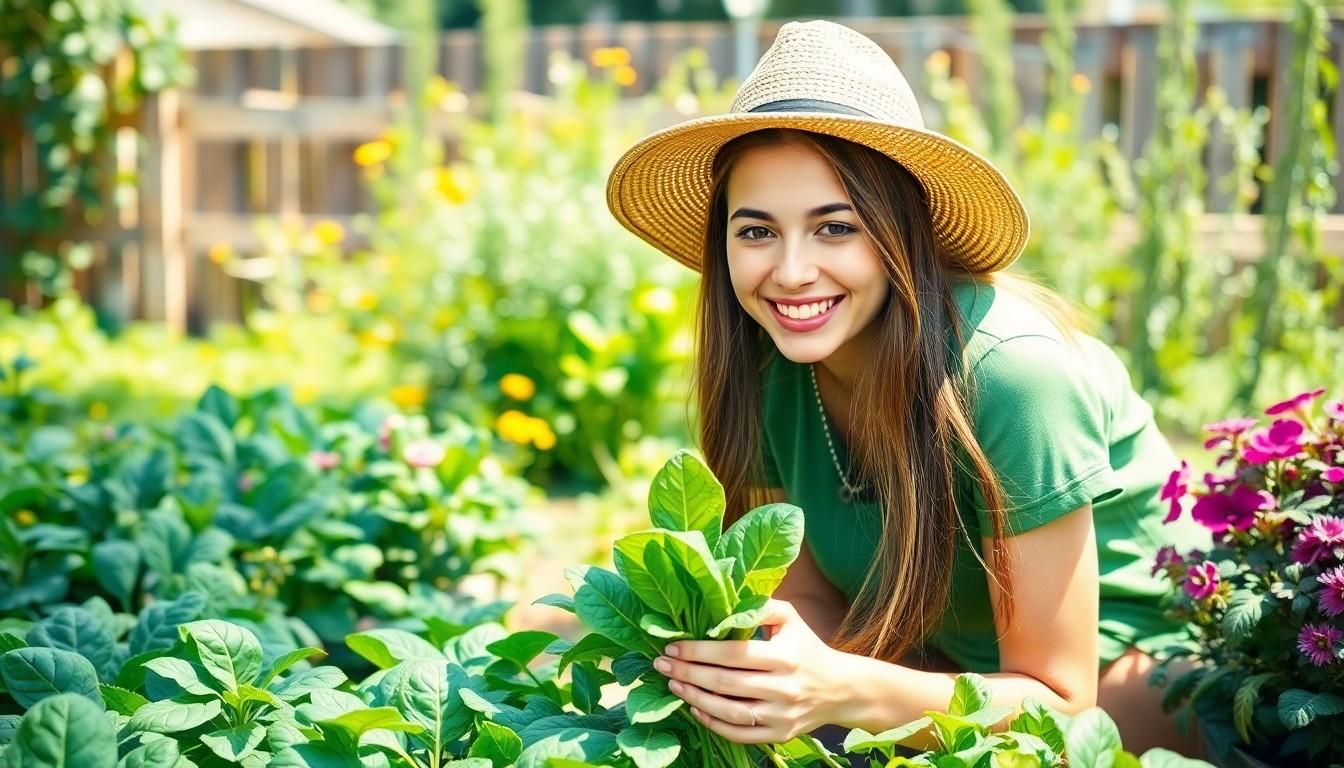Imagine strolling through your backyard or a nearby park and discovering a treasure trove of edible plants just waiting to be munched on. With an edible plants chart in hand, that dream can become a reality. This handy guide unlocks the secrets of nature’s pantry, showing which plants are not just pretty to look at but also deliciously edible.
Whether you’re a seasoned forager or just curious about what’s growing in your garden, knowing what’s safe to eat can turn a casual walk into a culinary adventure. Forget the grocery store—nature’s buffet is right outside! Dive into the world of edible plants and elevate your meals with fresh, flavorful ingredients straight from the wild. Who knew foraging could be so fun and tasty?
Edible Plants Chart
Edible plants include a wide range of flora that provides nourishment and flavor. Knowing these plants enriches culinary experiences while promoting self-sufficiency.
Definition and Importance
Edible plants refer to any plant species suitable for human consumption. Many cultures rely on local vegetation for food, medicine, and sustenance. Identifying these plants enhances meals and connects individuals with nature. Utilizing an edible plants chart aids in distinguishing safe options from toxic ones. This chart serves as a vital resource for foragers, promoting exploration and understanding of native species.
Benefits of Consuming Edible Plants
Consuming edible plants offers numerous advantages. First, these plants provide essential nutrients, such as vitamins and minerals, that support overall health. Incorporating diverse plant types into the diet fosters a balanced and varied nutritional intake. Additionally, many edible plants contain antioxidants, which help combat oxidative stress. Foraging encourages outdoor activity, promoting physical fitness and mental well-being. Embracing this practice cultivates a sustainable relationship with the environment, allowing individuals to appreciate the natural world while nourishing themselves.
Types of Edible Plants
Edible plants come in various categories that individuals can forage. Identifying these plants enhances meals and offers a deeper appreciation of nature’s offerings.
Vegetables
Vegetables include a wide range of edible plants such as spinach, kale, and carrots. Each provides essential vitamins and minerals. Leafy greens, for instance, contribute iron and calcium, while root vegetables offer dietary fiber and antioxidants. Foraging for wild versions like dandelion greens or wild asparagus can diversify one’s diet while introducing unique flavors.
Fruits
Fruits encompass many delicious options like berries, apples, and stone fruits. Raspberries and blackberries thrive in wild areas, providing antioxidants and vitamins. Seasonal fruits, including peaches and cherries, add freshness to meals. Individuals can enhance their foraging experience by recognizing local fruit-bearing plants, contributing to both health and culinary creativity.
Herbs
Herbs provide flavor and medicinal benefits, making them valuable foragers’ finds. Common options include wild garlic, mint, and thyme. Each herb enhances dishes with its unique aroma and taste. For example, wild mint works well in both salads and pastries. Recognizing and utilizing local herbs can elevate everyday cooking and support well-being.
Grains
Grains offer nourishment through species like wild rice, quinoa, and various grasses. Certain foragers find wild grains in their regions, adding essential carbohydrates to their diets. Wild rice, often found near lakes, serves as a nutritious addition to meals. Recognizing and collecting these grains fosters a deeper connection to sustainable food sources.
Edible Plants Chart Overview
An edible plants chart serves as a valuable guide for identifying safe plants. Foragers can use it to discover and enjoy various natural ingredients.
How to Use the Chart
Utilizing the chart involves cross-referencing plant appearances with descriptions. Look at pictures alongside notes on habitat and seasonality. Take note of characteristics like leaf shape and flower color. Budding foragers may find it helpful to mark off familiar plants as they learn. Always remember to double-check edibility, as some plants have toxic look-alikes. Over time, this practice builds confidence in foraging knowledge.
Categories and Classification
Edible plants fall into several key categories, each with unique benefits. Vegetables like spinach and carrots provide vital nutrients, while fruits such as berries deliver natural sweetness. Herbs enhance flavor, with options like wild garlic and mint bringing distinct aromas. Grains, including wild rice and quinoa, offer essential carbohydrates and protein. Understanding these classifications helps in making informed choices during foraging.
Nutritional Value of Edible Plants
Edible plants offer significant nutritional benefits, making them valuable additions to any diet. These plants provide a range of essential vitamins and minerals that contribute to overall health.
Vitamins and Minerals
Vitamins like A, C, and K flourish in leafy greens such as kale and spinach. They support immune function, improve skin health, and promote strong bones. Minerals such as potassium, calcium, and magnesium are abundant in various edible plants, with examples including bananas and broccoli. These minerals maintain proper muscle function and facilitate nerve signaling. Incorporating edible plants rich in these nutrients can enhance dietary diversity while ensuring an adequate intake of essential elements.
Health Benefits
Consuming edible plants encourages numerous health benefits that extend beyond basic nutrition. Antioxidants found in berries and herbs help combat oxidative stress and reduce the risk of chronic diseases. Dietary fiber from vegetables and fruits aids digestion and promotes gut health. Regular inclusion of these plants fosters energy levels and bolsters mental well-being. Engaging with nature through foraging elevates both physical and mental health, providing a holistic approach to wellness.
Foraging and Growing Edible Plants
Foraging edible plants provides an enriching experience in connecting with nature. Understanding the necessary precautions ensures safety during exploration and gardening.
Safety Considerations
Safety is vital when foraging. Proper identification of plants prevents accidental poisoning. Consulting multiple resources, such as field guides or reputable apps, enables accurate verification. Noting local regulations helps avoid legal issues when foraging in public spaces. It’s wise to forage away from pollution sources. Wearing gloves can protect against skin irritants. Finally, sampling small amounts of new plants initially assesses any adverse reactions.
Gardening Tips
Gardening offers a fantastic opportunity to grow edible plants. Choosing the right location ensures optimal sunlight and drainage. Selecting suitable soil amendments enhances plant growth. Regular watering, particularly in dry spells, supports healthy development. Companion planting can deter pests while maximizing space. Educating oneself about native plants increases chances of successful growth. Harvesting regularly promotes continual production, as many plants thrive on consistent picking.
Exploring the world of edible plants opens up a treasure trove of flavors and nutrients. With the help of an edible plants chart, foragers can confidently identify safe and delicious options while enjoying the great outdoors. This practice not only enriches meals but also fosters a deeper connection to nature and sustainable living.
As individuals venture into foraging, they’ll discover the diverse benefits of incorporating these plants into their diets. From enhancing physical health to promoting mental well-being, the journey of foraging is both rewarding and educational. Embracing this culinary adventure can transform everyday meals into vibrant experiences filled with nature’s bounty.





